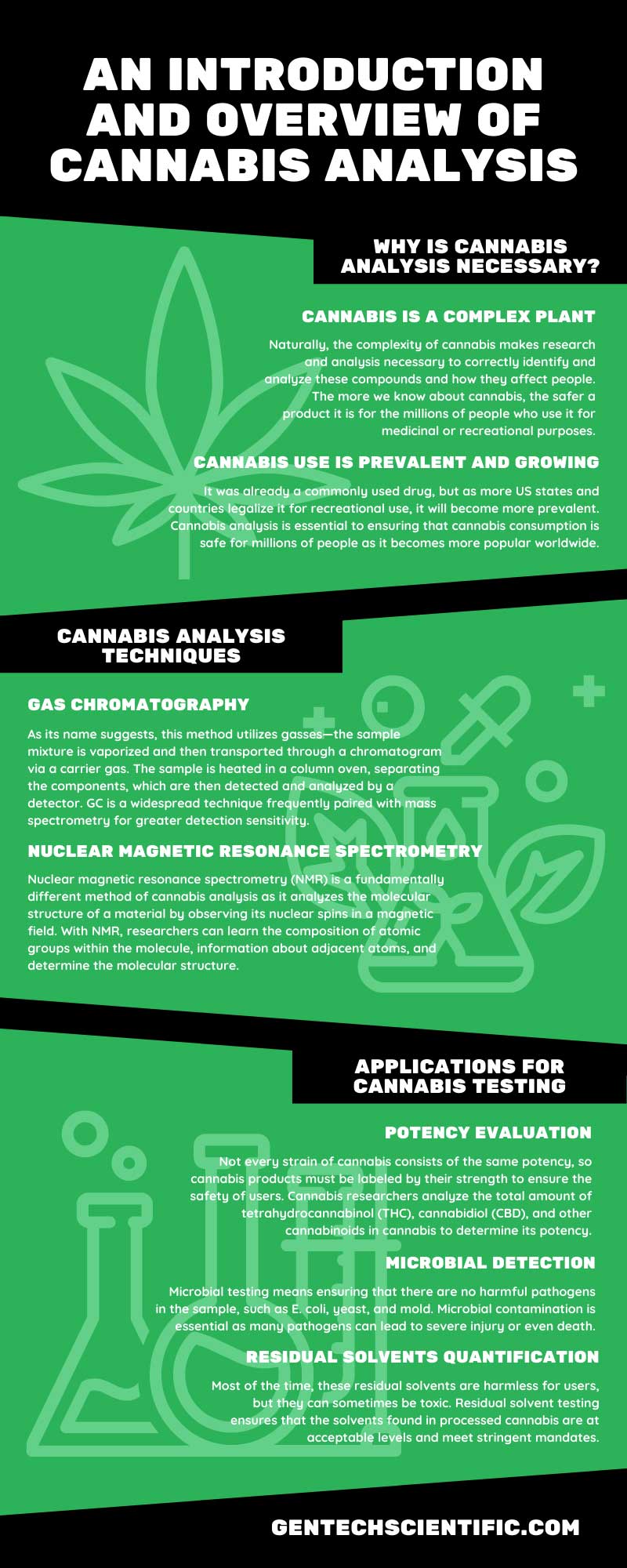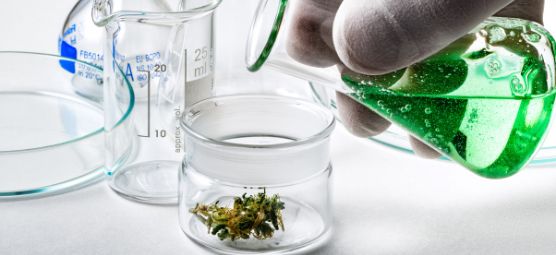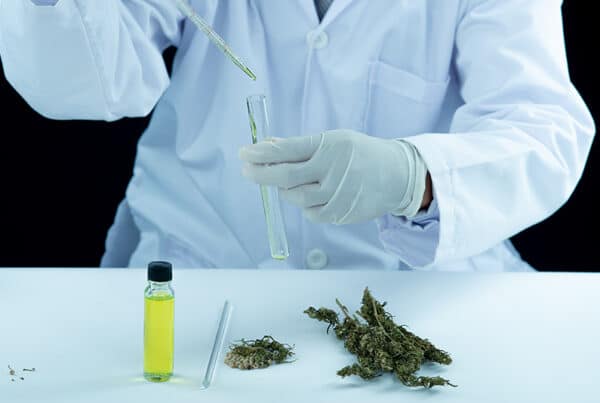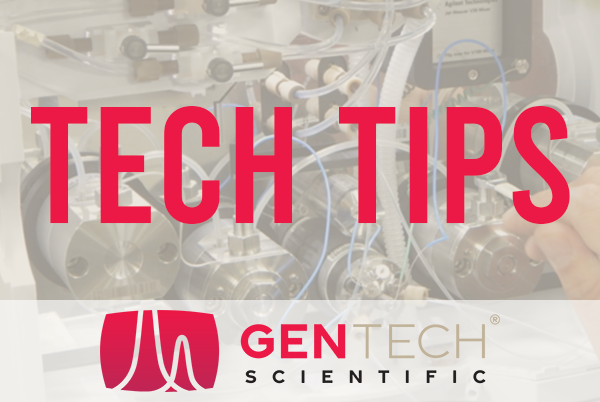The cannabis industry seems to only grow more by the day, and scientific research about cannabis is also growing. In our introduction and overview of cannabis analysis, we’ll explain why cannabis research is essential, the most common methods of study, and more.
Why Is Cannabis Analysis Necessary?
Before we get into the details of cannabis analysis, we’ll explore why it’s necessary that we analyze cannabis at all. As you’ll see, the cannabis flower is a chemically complex plant, and its use is only growing more popular throughout the US and the world.
Cannabis Is a Complex Plant
The cannabis flower contains over 400 chemical entities, and within them are 60 distinct cannabinoid compounds. Each of these compounds has varying effects on people, sometimes even opposing one another.
Naturally, the complexity of cannabis makes research and analysis necessary to correctly identify and analyze these compounds and how they affect people. The more we know about cannabis, the safer a product it is for the millions of people who use it for medicinal or recreational purposes.
Interesting fact: There are documented cases of our ancestors using the cannabis flower for its medicinal qualities that date back to the third millennium BC.
Cannabis Use Is Prevalent and Growing
As we mentioned, millions of people in the US and globally use cannabis for its medicinal and euphoric properties. In fact, it’s the most used illicit drug globally, but it’s also becoming more decriminalized and legalized for recreational use.
It was already a commonly used drug, but as more US states and countries legalize it for recreational use, it will become more prevalent. Cannabis analysis is essential to ensuring that cannabis consumption is safe for millions of people as it becomes more popular worldwide.
Cannabis Analysis Techniques
How do researchers and scientists analyze cannabis? There are many different techniques for cannabis analysis, but the most common are gas chromatography and high-performance liquid chromatography—with nuclear magnetic resonance spectrometry also growing in popularity.
Gas Chromatography
The most common method for quantifying cannabinoids and cannabis compounds is the gas chromatography (GC) technique. GC separates chemical components of a mixture to detect and accurately analyze the quantity of the components.
As its name suggests, this method utilizes gasses—the sample mixture is vaporized and then transported through a chromatogram via a carrier gas. The sample is heated in a column oven, separating the components, which are then detected and analyzed by a detector. GC is a widespread technique frequently paired with mass spectrometry for greater detection sensitivity.
High-Performance Liquid Chromatography
High-performance liquid chromatography (HPLC) follows many of the same principles of the GC technique, except it uses a liquid sample and carrier. Chemists will dissolve a sample into a fluid, where it’s then carried through a fixed material, called a stationary phase, in which elution occurs.
Essentially, the sample fluid is carried through the stationary phase, where the components are separated and then identified depending on the speed at which it moves through the stationary phase.
Nuclear Magnetic Resonance Spectrometry
Nuclear magnetic resonance spectrometry (NMR) is a fundamentally different method of cannabis analysis as it analyzes the molecular structure of a material by observing its nuclear spins in a magnetic field. With NMR, researchers can learn the composition of atomic groups within the molecule, information about adjacent atoms, and determine the molecular structure.
NMR is commonly used to identify unknown chemical substances, typically in the pharmaceutical industry. With cannabis becoming more prevalent in therapeutic settings, NMR is a popular method for chemical analysis.
Interesting Fact: Despite its reported use by humans for thousands of years, cannabis wasn’t widely utilized or studied until the 19th century.
Applications for Cannabis Testing
There are many applications for cannabis testing, from analyzing its potency to contaminant detection. Below, we’ll briefly explain the most common cannabis analysis applications.
Potency Evaluation
Not every strain of cannabis consists of the same potency, so cannabis products must be labeled by their strength to ensure the safety of users. Cannabis researchers analyze the total amount of tetrahydrocannabinol (THC), cannabidiol (CBD), and other cannabinoids in cannabis to determine its potency.
THC is the compound that gives cannabis users a euphoric feeling, while CBD offers health benefits for some without disrupting cognitive function. Potency evaluation is typically performed with HPLC to quantify the principal cannabinoids in cannabis.
Pesticide Detection
Cannabis is a plant grown like any other mass-produced crop, like corn or beans, which means that pesticides and mycotoxins are a concern. Chemists analyze cannabis to identify the number of residual pesticides and mycotoxins and determine if the sample is safe for consumption.
GC and HPLC methods are common in cannabis analysis and are frequently employed together for maximum sensitivity and accuracy.
Terpenes Analysis
A terpene is an unsaturated hydrocarbon—essentially, the compound within all plants and flowers that gives it its distinctive aroma. They’re why a violet may smell different than a rose, or one strain of cannabis may have a distinct aroma from another.
Terpene analysis helps researchers maintain consistency among cannabis strains and cultivators. Chemists typically employ the GC with mass spectrometry method for terpene analysis.
Microbial Detection
Microbial testing means ensuring that there are no harmful pathogens in the sample, such as E. coli, yeast, and mold. Microbial contamination is essential as many pathogens can lead to severe injury or even death.
Microbial contamination is most often found in larger fields of cannabis, and as cannabis becomes more popular, these larger crop fields are likely to become more common. Microbial testing ensures that products from these large crop fields are safe for consumption.
Residual Solvents Quantification
Users can consume cannabis in various wars, including concentrates, distillates, and extracts. While manufacturing these cannabis products, residual solvents are left behind.
Most of the time, these residual solvents are harmless for users, but they can sometimes be toxic. Residual solvent testing ensures that the solvents found in processed cannabis are at acceptable levels and meet stringent mandates.
Heavy Metals Testing
Like many crops, cannabis is also tested for heavy metal residue. Many dangerous elements can contaminate crops through the soil, including arsenic, mercury, or lead.
If these elements contaminate the soil, they can also pollute the crop and be toxic for users. A fertilizer or water source may also contain harmful cobalt or manganese, so heavy metals testing is essential to ensuring a safe cannabis product.
We hope you’re more familiar now with cannabis analysis after reading our brief introduction and overview. At GenTech Scientific, we offer high-quality and affordable cannabis analysis equipment, toxicology lab equipment, and much more. If you’re interested in expanding your lab equipment inventory, contact us today!






